Trubanc Storage Fees
I have added storage fees to Trubanc.
One of the drawbacks of Loom is that there's no way to make money from Loom itself, except for small amounts of one-time income from new users for asset tokens. In order to make Trubanc a money-making proposition for the asset issuers, I have added storage fees. I expect that most Trubanc assets will be backed by precious metals in storage. It makes sense for the issuer, who must pay for the space and security of that storage, to be paid a small periodic fee. He can now set a yearly percentage rate charged for all users of his asset.
I'm going to describe the new feature with an example. I'm assuming two users, John and Mary. John creates a gold-backed asset, named "John GoldGrams", with a storage fee of 1%. The market will determine how much storage fee is viable. The Free Lakota Bank charges 1/20,000 per month, or 0.06% per year. C-gold charges 1% per year. E-gold too. Trubanc allows the asset issuer to decide what to charge, and to change it at any time.
Rather than keeping track of an average monthly balance, and assessing the storage charges monthly, Trubanc includes storage charges in every transaction, paid by the holder of the asset. So when you make a spend, you pay the fee on your original balance for the amount of time it's been there. And when you accept a spend from someone else, you pay the fee on the accepted amount, for the time that it's been in your inbox. Trubanc keeps fractional amounts on fees, so that these small amounts can add up for the asset issuer.
John creates his new asset:
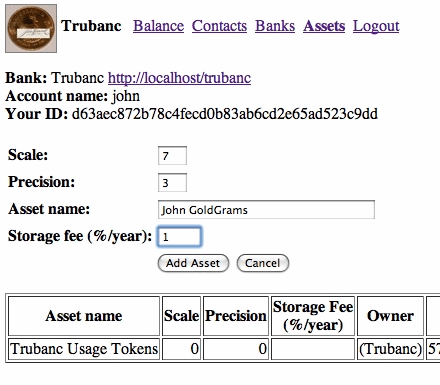
To change the fee, fill in the new fee, and press the "Update Storage Fees" button:
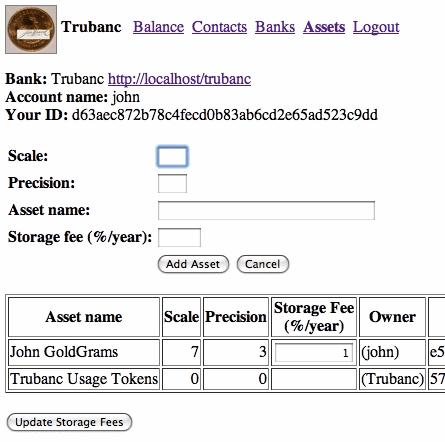
Mary sells John her old car, and elects to take payment as 100 John GoldGrams. Here's her inbox after John spends the 100 grams to her:

After accepting the 100 gram spend, in the time it took me to write this, Mary has already lost a little to John's storage fees. She's paid less than 2 hundred thousandths of a gram, about 6 hundredths of a cent, some gold dust:
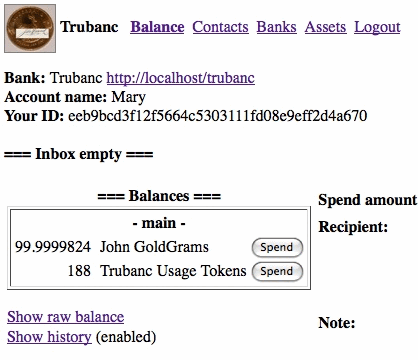
Mary pays John a gram for a few old CDs, and she loses a little more gold dust:
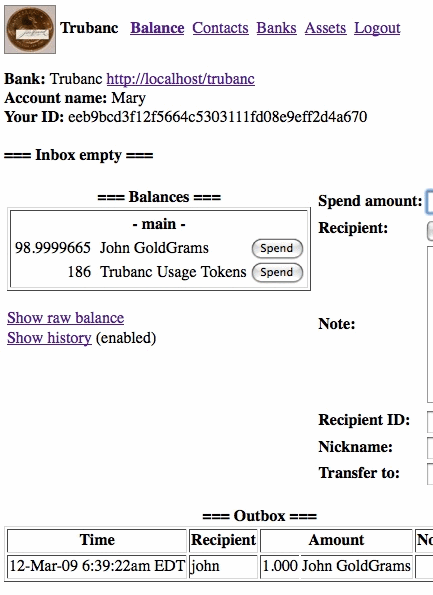
For the asset issuer, received storage fees are shown under the outbox. Here's John's account after Mary accepts the 100 gram spend and spends back 1 gram:
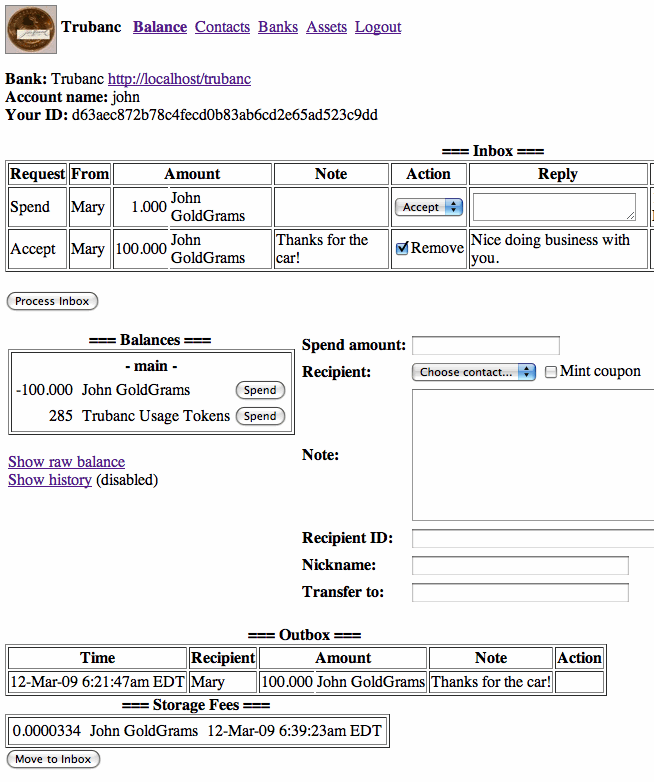
Clicking the "Move to Inbox" button moves the received fees to the inbox as a spend from the bank for "Storage fees":
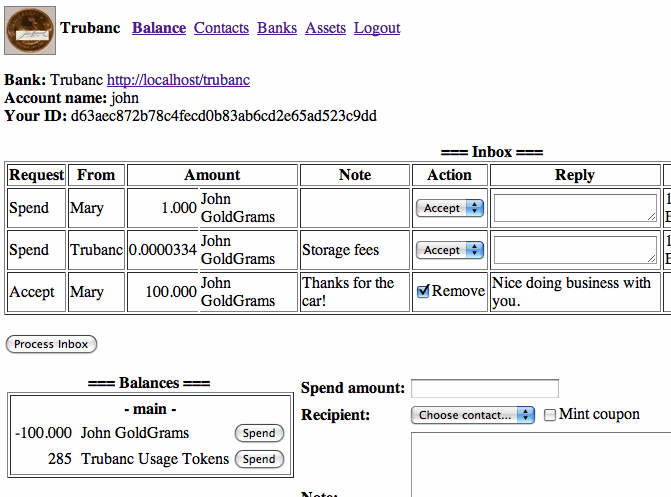
Clicking the "Process Inbox" button receives the 1 gram for the CDs plus the gold dust for Mary's storage fees:
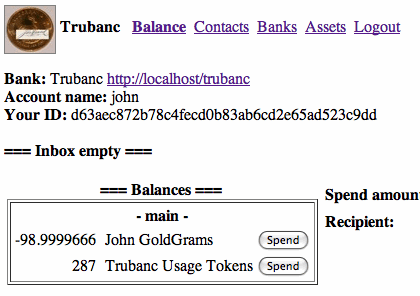
There's one more feature I haven't implemented yet. What I demoed above collects fees when balances change. In order to collect storage fees on balances that change infrequently, the asset issuer will be able to run a periodic batch job that visits every account, collecting fees since the last batch job was run and posting them as negative spends (remember, Trubanc can't change a user's balance without his digital signature approving the change, but it CAN post a bank charge as a negative spend).
This code is live at trubanc.com/client. If you want to play with it, just ask, and I'll give you a coupon to create an account or three.
Previous Posts:
The Martial Law Mind-Set
The Obama Deception
Marlin's New 1895 SBL .45-70 Lever Action Rifle
Community Currency Magazine
What does one TRILLION dollars look like?
The War on the Border
United Socialist States of America Flag
Quote
Jailed Browns remain defiant
Is "Net Neutrality" a Scam?

fees
In Loom, the issuer can make money by building his costs and profit into the bailing and redemption fees. It is also possible to create a Loom asset that represents a "share" in a pile of gold, and to depreciate that asset over time.
The idea in Loom was to represent physical assets as closely as possible in a digital form. In the physical world, assets just "sit there," and pieces of them don't go flying off back to the mint.
Nevertheless, great job with the Trubanc storage fees.
Edit comment